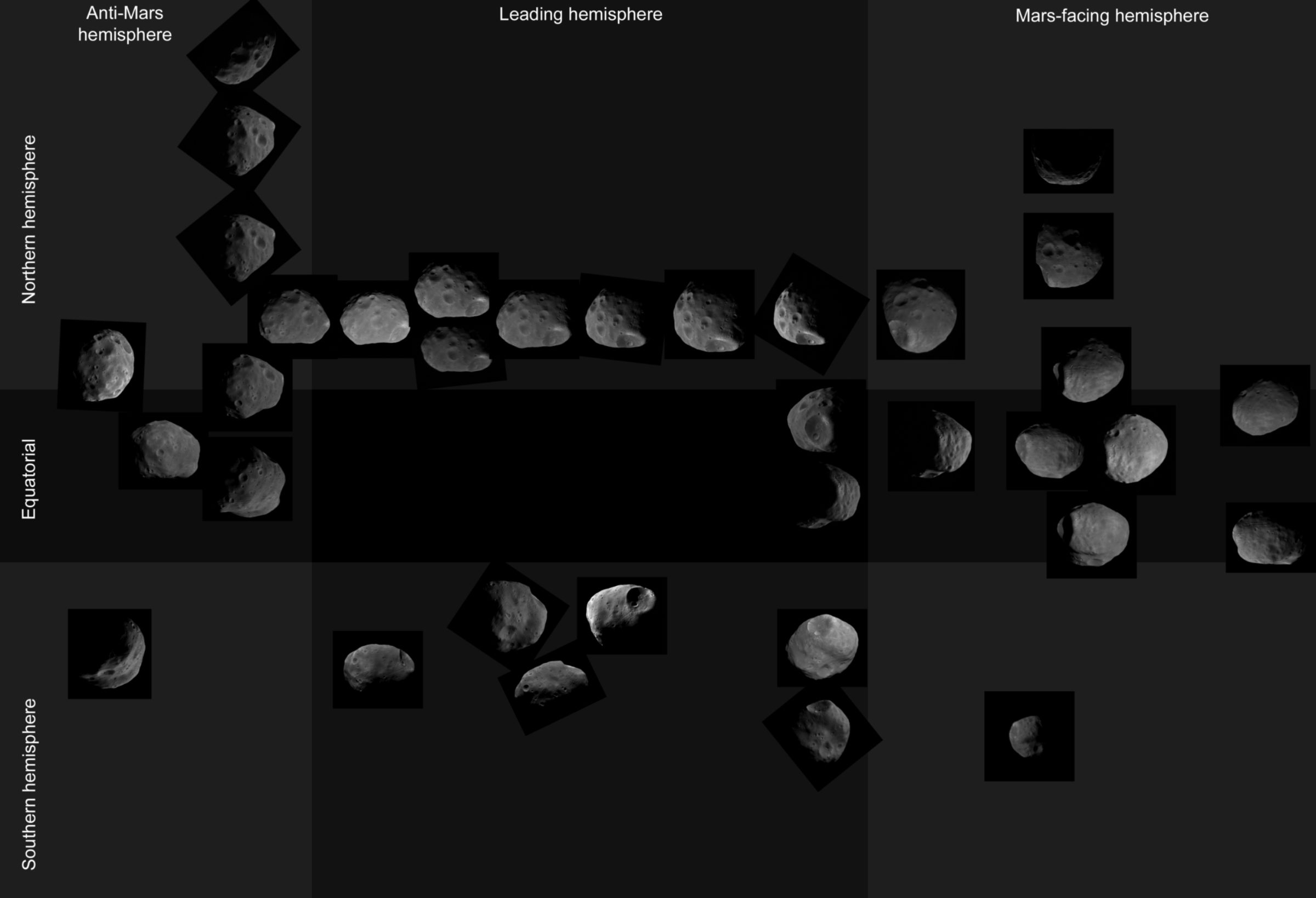Emily Lakdawalla • Dec 15, 2016
ExoMars Trace Gas Orbiter takes in a rarely-imaged view of Phobos
ExoMars Trace Gas Orbiter's science team enjoyed the opportunity in November to test out their science instruments on Mars. The spacecraft entered orbit successfully in October, but needs to spend a year adjusting its trajectory, gently dipping into Mars' uppermost atmosphere to dump velocity and achieve a lower, more circular orbit. No science will be possible during this aerobraking period. To appease the science team's appetites for data (and, more importantly, to make sure everything was still fine after the rigors of orbit insertion), the mission provided the science team the opportunity to use two orbits to operate their instruments.
ESA released some early results from several instruments in a web article on November 29. But the thing I was most excited to see was the new images of Phobos from ExoMars' camera, the Colour and Stereo Surface Imaging System (CaSSIS). And they didn't disappoint. The photo is fuzzy because it's been blown up a lot, but it's in color (yay!) and it shows a face of Phobos that we don't often get to see.

The color is based on the visible to near-infrared spectrum, like many Mars Reconnaissance Orbiter HiRISE images; color differences are more exaggerated than is real. You can see that the area on the left -- part of the ejecta of the Stickney crater, out of view here -- is grayer than the rest, which is yellowish-brownish. (You can also see some color fringing, where the color channels don't align perfectly; that's a result of the way that CaSSIS color imaging works, viewing Phobos from slightly different directions for each color channel.) It's common for crater ejecta to be grayer or bluer than surrounding terrain, because planetary surfaces get browner with longer exposure to space weathering, and more recent impacts expose unweathered material.
It's a neat pic on its own, but neater when I realized that we don't commonly see Phobos from this angle. Most Mars orbiters operate in orbits that are much closer to Mars than Phobos orbits. Since, like our Moon, Phobos always keeps the same face pointed at Mars, that means most Mars orbiters most commonly only look at its Mars-facing hemisphere. Of recent missions, the one that has done the most Phobos imaging is Mars Express; Mars Express has a highly elliptical orbit that enjoys regular seasons of Phobos flybys. A long time ago (eight years ago, yikes), I took a thorough look at how well Mars Express had covered Phobos, and the answer was: pretty well -- except for the trailing hemisphere. Here's the summary image from that post:

Of course, it's been eight years -- surely Mars Express has imaged the trailing hemisphere by now? As much as I'd like to, I don't have time today to do a deep dive into Mars Express data, but I did find a 2014 article by Marita Wählisch and coauthors about generating a global map of Phobos from Mars Express images (PDF), and the abstract says "A gap on the trailing hemisphere, which could not be imaged by HRSC due to the illuminating conditions, was closed by three Viking orthoimages." So it sounds like it may not be possible for Mars Express, and now I wonder if Wählisch needs to update her map with the new CaSSIS data!
While I was looking for other trailing-hemisphere images of Phobos, I did come across this gem from Mars Global Surveyor, taken way back in 2003. What a great little spacecraft that was.

Let’s Go Beyond The Horizon
Every success in space exploration is the result of the community of space enthusiasts, like you, who believe it is important. You can help usher in the next great era of space exploration with your gift today.
Donate Today

 Explore Worlds
Explore Worlds Find Life
Find Life Defend Earth
Defend Earth

